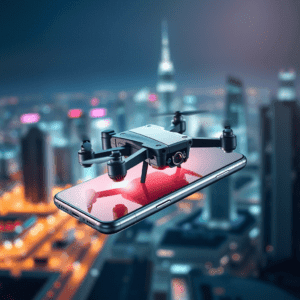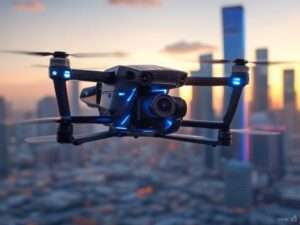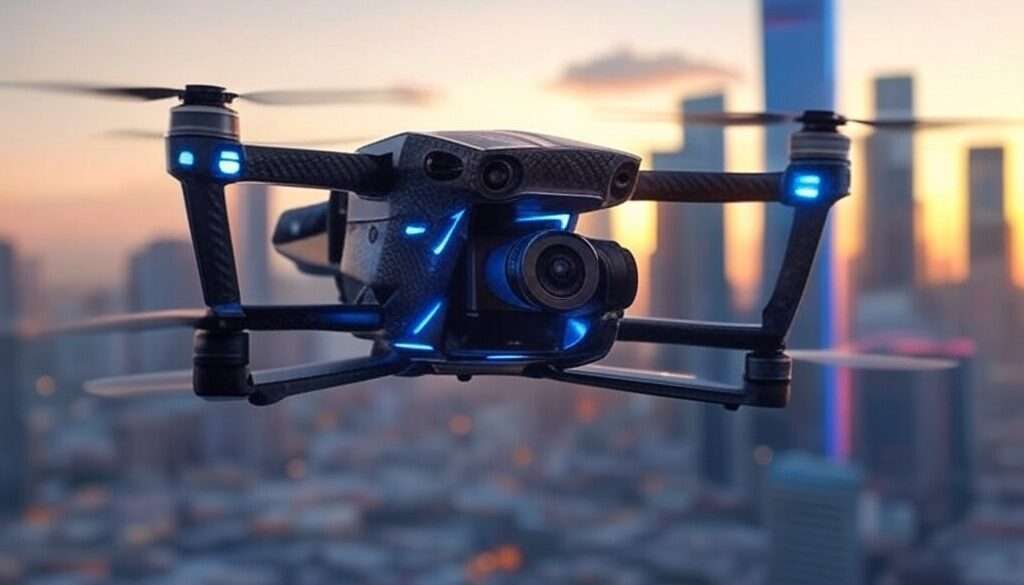The Ultimate Guide to Drone Cameras: Beginner’s Guide
In today’s world Drone cameras have revolutionized photography and videography, creating new fields for creative professionals and even businesses. It helps in capturing aerial shots and also assists in industrial inspections, drone cameras have a broad range of applications. In this blog post, we’ll explore everything you need to know about drone cameras, including types, features, uses, price ranges, and buying considerations

What is a Drone Camera?
A drone camera is a high-resolution camera attached to an unmanned aerial vehicle (UAV), commonly known as a drone. These cameras allow users to capture aerial footage with ease, which was initially impossible for the common man. Modern drone cameras come equipped with stabilization systems, advanced sensors, and smart shooting modes, making aerial photography more accessible than ever before.
Types of Drone Cameras
1. Consumer Drones
These drones are designed for lovers of nature and photographers. They provide high-resolution cameras, and GPS capabilities, in addition to intelligent flight modes.
- Example: DJI Mini 3 Pro, Autel EVO Lite+
2. Professional Drones
It is being used by filmmakers, surveyors, and real estate professionals, these drones are equipped with superior camera sensors, interchangeable lenses, and advanced stabilization systems.
- Example: DJI Inspire 3, Freefly Alta X
3. Racing Drones
It is often used for recording speed and agility and it features FPV (First-Person View) cameras and is also used in drone racing competitions.
- Example: DJI Avata, BetaFPV Cetus Pro
4. Industrial & Enterprise Drones
These drones are used in multiple industries which include agriculture, construction, and security. Moreover, it includes thermal imaging cameras, LiDAR sensors, and multispectral cameras.

- Example: DJI Matrice 300 RTK, Parrot Anafi USA
Key Features to Look for in a Drone Camera
1. Camera Resolution and Sensor Size
- If there is more resolution in the drone camera then we can expect for more detailed photograph. 4K and even 8K cameras are now standard in high-end drones.
- Sensor size affects low-light performance; larger sensors like 1-inch or full-frame sensors produce better results.
2. Gimbal Stabilization
- For smooth, shake-free footage 3 axis gimbal is required.
- Advanced drones feature AI-powered stabilization and horizon leveling.
3. Flight Time and Battery Life
- Most drones offer 20-40 minutes of flight time per battery charge.
- For doing extended shooting sessions we can go for the swappable batteries.
4. Range and Transmission Technology
- For extended range & stable video transmission, higher-end drones use OcuSync or Lightbridge technology
- Few drones have a range of nearly 10-15 km.
5. Obstacle Avoidance and Safety Features
- Some of the advanced drones come with sensors that detect and avoid hurdles.
- Features like Return-to-Home (RTH) ensure a safe landing in case of signal loss.
6. Autonomous Flight Modes
- Features like Follow Me, Waypoint Navigation, and ActiveTrack make capturing complex shots effortless.
Popular Uses of Drone Cameras
1. Aerial Photography and Videography
- Can be used in filmmaking, weddings, and social media content creation.
2. Real Estate and Property Marketing
- It provides stunning aerial views of properties for listings and promotional materials.
3. Surveying and Making
- Drone cameras help in creating 3D maps, construction site monitoring, and agricultural analysis.
4. Search and Rescue Operations
- Since they are equipped with thermal imaging, drones assist in finding missing persons and disaster response.
5. Wildlife and Environmental Monitoring
- It is also used for tracking wildlife, anti-poaching efforts, and information related to climate change research.
6. Event Coverage and Live Streaming
- Often used in capturing large-scale events such as concerts, sports, and rallies from unique perspectives.
Things to Consider When Buying a Drone Camera
- Purpose – Choose a drone according to your needs (hobby, professional, or industrial use).
- Budget – Drones range from $200 to over $10,000 depending on features.
- Regulations – Check local drone laws, registration requirements, and no-fly zones.
- Accessories – Extra batteries, ND filters, propeller guards, and carrying cases enhance the experience.
- Software and App Support – A user-friendly mobile app with editing and sharing features is crucial.
Conclusion
In the 21st century Drone cameras have made it a childs play to capture the world from above. Whether you’re a beginner looking to explore aerial photography or a professional seeking high-end drone solutions, there’s a perfect drone camera available for your respective purposes. It is mandatory to consider the features, applications, and legal requirements before making a purchase, and take your photography and videography to new heights!
Are you ready to take the plunge into drone photography? Share your insights or ask questions in the comments below!





